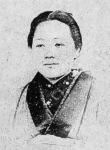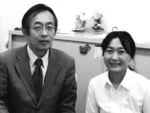News for Spring 2013

Seminar on Christian View of Nuclear Power Generation
The Eastern Division of the Japan Evangelical Theological Society (JETS) hosted their autumn seminar in Tokyo on November 12, 2012, with the theme, “How Christians Should Think about Nuclear Power Generation.” Two presenters discussed the topic, which poses difficult questions and demands relevant answers, in the face of the suffering experienced because of the nuclear disaster in Fukushima in March 2011.
Yuji Sekino, Principal of Covenant Seminary, presented his paper “Nuclear Power and Christianity in the Context of Natural Science.” Looking back on history, Sekino pointed out how the Christian world view in the West served as a catalyst in developing modern natural science, which eventually spawned nuclear technology.
He also gave an overview of the arguments of Jinzaburo Takagi, a 20th-century Japanese scientist and a leader in the anti-nuclear movement. Takagi read and understood the Bible well, even though he was not a Christian. He challenged Christians about the contribution of Christian thinking of the West to the development of nuclear technology.
Sekino concluded that nuclear technology is beyond the scope of God’s directive for human beings to rule the earth. He urged the audience to explore the proper biblical understanding of the directive, by remembering that we humans are part of God’s creation and that God is the ultimate ruler of the earth.
The second presenter was Syuji Mizukusa, Pastor of Koumi Christ Church of the Japan Alliance Christ Church. The title of his presentation was, “Reading Nuclear Issues Through the Eyes of the Bible.” Leading the audience through Genesis 1 through 11, Mizukusa showed how arrogance and covetousness would lure people away from God, and how technologies often played a part in human corruption.
Mizukusa admitted being guilty of covetousness by enjoying the convenience resulting from nuclear power, without warning of the danger involved in the technology. He expressed his resolve to pray for, speak up for, and act towards creating a society not reliant on nuclear power generation.
From Christian Shimbun, November 25, 2012
Translated by Atusko Tateishi
Japanese Christian Portrayed in TV Drama

Yae no Sakura (The Cherry Blossoms of Yae), an NHK historical drama broadcasting throughout this year, is filmed in Aizu Wakamatsu. This historic city has had deep connections with Christianity in Japan. Gamo Ujisato, the second Aizu Hanshu (the feudal lord of the Aizu Clan) and one of the most brilliant samurais in 16th century, built a beautiful castle town in Aizu Wakamatsu. Ujisato was a Christian and some documents related to the Christians of those days are exhibited at a local museum. There is also a stone monument called “Christian mound” near the city cemetery for the Christians persecuted and martyred in the town soon after Ujisato died.
More than 250 years later, the heroine of the NHK drama, Niijima Yae, was born. She was the daughter of the Aizu domain’s official gunnery instructor. During the Boshin war,* Yae, 23 years old, participated in the fight in boy’s clothes, using a Spencer repeating rifle. The Aizu Clan were besieged in the Tsuruga Castle but eventually lost.
After the Meiji Restoration, Yae moved to Kyoto and started learning the Bible with a missionary, Dr. M.L. Gordon. She was baptized, and married Niijima Jo the next day, in the first Christian style marriage ceremony in Japan. Jo was a Christian who had studied in the United States and was a founder of Doshisha University, the first private Christian university in Japan, but died at the age of only 46. Yet Yae worked hard to run the university to make Jo’s dream come true. In her old age, she served as a volunteer nurse during the Russo-Japan and the Sino-Japan Wars and was called the “Japanese Nightingale.” She died at the age of 87.
Two other girls, who also became famous Christians, were also in the siege of the Tsuruga Castle. One of them, Oyama Sutematsu (eight years old during the Boshin War), studied in the US for 11 years as a member of the Meiji Government Mission. When she returned to Japan, she married an Imperial Japanese Army General, Oyama Iwao. She did an excellent job as hostess for foreign diplomats at western style banquets given by the government.
The other girl, Wakamatsu Shizuko (four years old during the Boshin War), was given a bilingual education in Yokohama by another missionary, Mary Kidder, the founder of Ferris Girl’s School. Shizuko became a teacher at Ferris, and was renowned as a translator and writer.
Yae, Sutematsu, and Shizuko survived the war but had a sense of loss, which brought them to the Bible that gave meaning to their lives in the new era. It will be interesting to see how these strong Aizu women are portrayed in the drama.
From Christian Shimbun, January 6, 2013
Translated by Tomoko Kato
Reaching Out Together

In Ishikawa Prefecture, just three minutes’ walk from Kanazawa station, there stands Kanazawa Park Building, an office building where 1,500 people work. In this building, Kanazawa Kokoro Chapel—a church with its own psychosomatic clinic—is stationed. Rev. Toyomi Hamahara pastors the church with her husband Shōni, who is the associate pastor as well as the head doctor of the clinic.
The church also has a café, which opened in July 2012. It is managed by Mr. and Mrs. Saitō, who once suffered with depression and were treated by Dr. Hamahara. Through treatment and coming to faith, they made quick recovery and now are joyfully working in the café.
Regarding the beginning of this venture, Shōni says, “I thought people would find it easier to come to church if it was also the clinic they always came to. I had worked as a psychiatrist in another hospital for a long time, but decided to start my own clinic so I could share the gospel in some way or another.” As Shōni started his own clinic, Toyomi envisioned a church plant. After prayerful thought, she applied to the distance-learning course of Jesus To Japan Mission Seminary. After graduating in 2006, she became the pastor of the chapel.
The church started in the clinic’s waiting room. “Every year the number increased. There hasn’t been a day without a new person in the past six years,” says Shōni. “There were 40–50 people coming daily for examinations [at the clinic] from the beginning. Some came because there was a chapel. Others became interested in attending the church through the clinic and were eventually saved.” They say it is currently all working together well.
From Christian Shimbun, January 13, 2013
Translated by Tim Williams
New Evangelical Hymnal Published and Dedicated
The Japan Evangelical Association for Congregational Singing (JEACS, http://jeacs.org) published the Kyokai Fukuin Sambika (Evangelical Hymns for the Church) in July 2012 through World of Life Press. JEACS (founded in 2005 as an interdenominational organization to contribute to congregational singing of the Christian Church) has worked on the selection, translation, adaptation, and composition of hymns in order to compile a new hymnal by evangelical Christians. Their effort produced the fifth interdenominational hymnal in the postwar era. It is intended for use in a broad spectrum of churches in Japan as they worship the Lord.
The songs have been selected according to the criteria of the evangelical content of lyrics and the suitability for congregational singing in a worship service. About 300 of the hymns come from older hymnals, another 150 were chosen from older hymnals with a revised translation of the lyrics. About 30 new overseas hymns and 20 new Japanese ones have also been included.
While JEACS attempted to modernize lyrics, they also made a point to preserve, whenever possible, the traditional and elegant lyrics that have become familiar to people over the years. Many of the songs also come with suggested guitar chords as well as music for keyboard accompaniment.
Celebrating the hymnal publication, Susumu Tanaka, Chairman of the JEACS Hymnal Committee said, “It is deeply significant that three denominations, the Japan Alliance Christ Church (JACC, 同盟), the Japan Evangelical Church Association (JECA), and the Immanuel General Mission (IGM), joined forces to publish the hymnal. We accepted each other’s denominational characteristics, while striving to stand upon evangelical teachings rather than one’s own denominational emphases. Working together in the unity of Jesus has been a great blessing.”
From Christian Shimbun, Aug 19; Nov 25, 2012
Translated by Atusko Tateishi
*Boshin War: The clashes between the forces of the Tokugawa Shogunate and the Imperial court from 1868 to 1869. The Aizu Clan was on the side of Shogunate. The Imperial court won, gaining power to reign over the country.
*Niijima Yae. Photo contribued by the Christian Shimbun.
*Doctor and Reverend Hamahara. Photo contribued by the Christian Shimbun.
